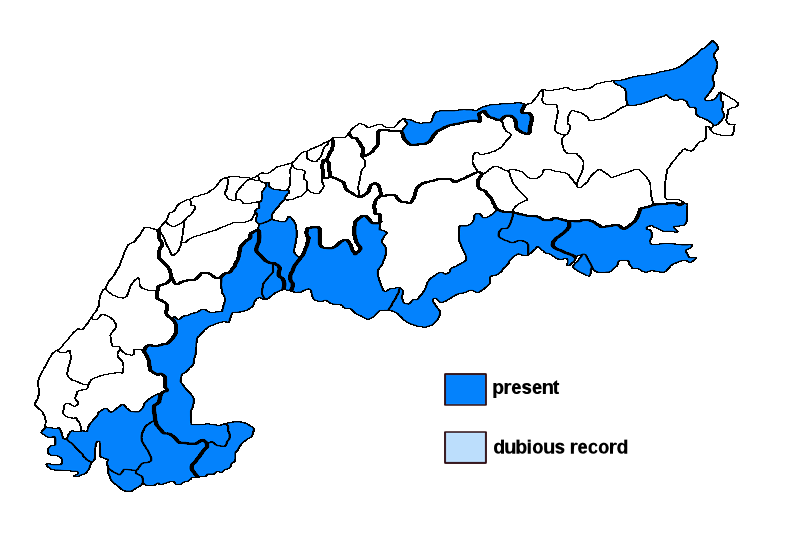Caloplaca pollinii (A. Massal.) Jatta
Syn.: Blastenia pollinii A. Massal., Callopisma ferrugineum (Huds.) Trevis. var. pollinii (A. Massal.) Bagl., Callopisma pollinii (A. Massal.) Trevis., Caloplaca phaeocarpella (Nyl.) Zahlbr., Lecanora nigricans (Tuck. ex Nyl.) Nyl., Lecanora phaeocarpella Nyl., Lecidea gibberosa Pollini non Ach., Placodium phaeocarpellum (Nyl.) A.L. Sm., Placodium pollinii (A. Massal.) A.L. Sm., Huneckia pollinii (A. Massal.) S.Y. Kondr., Elix, Kärnefelt, A. Thell, J. Kim, A.S. Kondratyuk & Hur
Lichenised.
Substrate: bark, lignum
Altitudinal range: from the mesomediterranean belt (potential vegetation: evergreen broad-leaved forests dominated by Quercus ilex) to the submediterranean/colline belt (potential vegetation: mixed deciduous forests dominated by Quercus and Carpinus)
Note: a warm-temperate species, mostly found on the smooth bark of trees such as Alnus along rivers; much more common in the past, presently extinct over much of its former range.
Austria: Niederösterreich (incl. Wien); Germany: Oberbayern; Switzerland: Ticino; Uri; France: Alpes-de-Haute-Provence; Alpes-Maritimes; Vaucluse; Var; Italy: Friuli; Veneto; Lombardia; Piemonte; Liguria; Slovenia: Alpine and Pre-Alpine Slovenia; Trnovsky Gozd;





